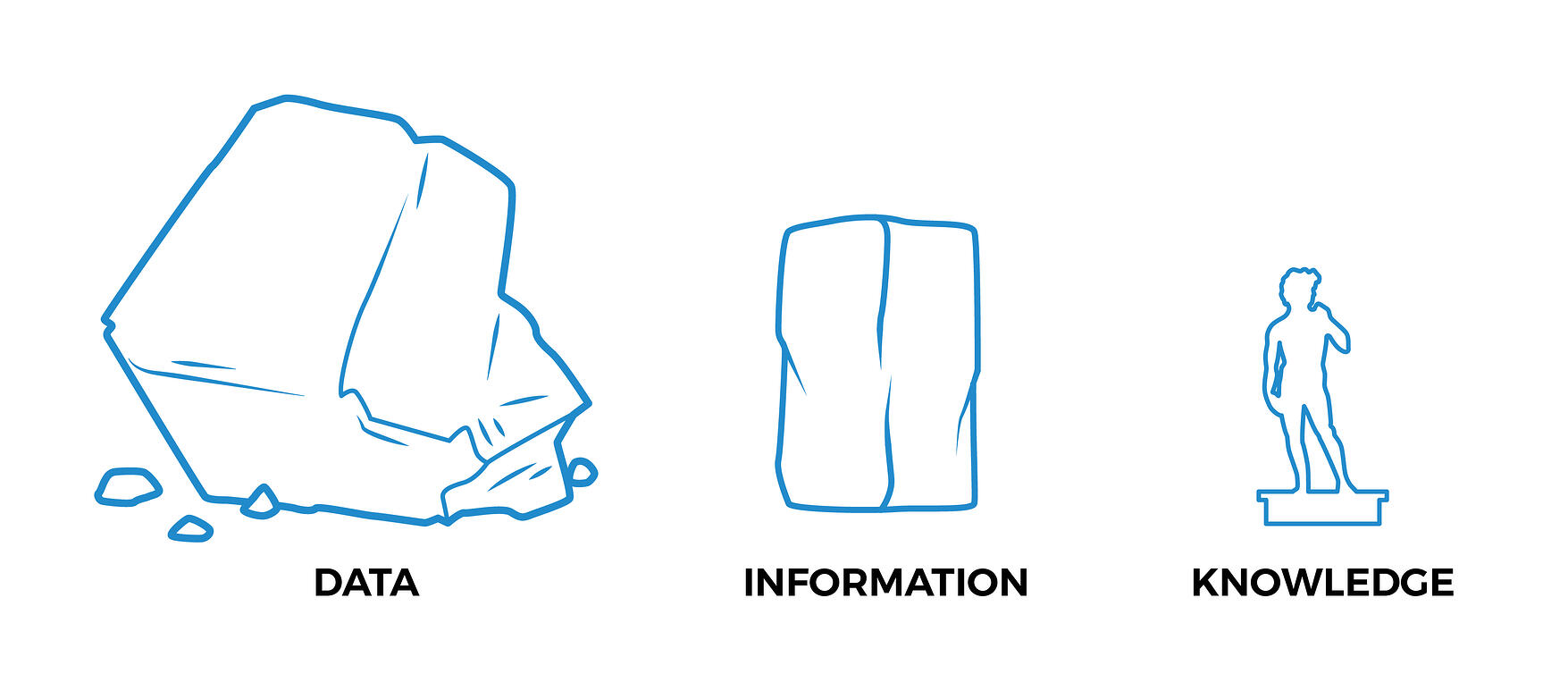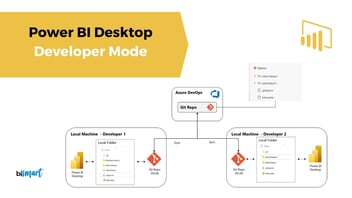Any type of Power BI project requires a number of criteria to be successful. Discover how to plan and approach Power BI projects in 8 steps.
Many companies consider investing in technologies to improve their business processes without realizing that the implementation of a new corporate business intelligence tool demands a well-designed deployment project. In this article we explain how to approach and plan Power BI projects to obtain optimal results.

Power BI is one of the most widely used business intelligence tools in business and, according to the latest Gartner Magic Quadrant, the best BI and analytics platform on the market.
Power BI enables organizations to transform data into insights through data analysis and data visualization. One of the most common uses of Power BI in the business world is the creation of corporate dashboards and reports that allow business users to track their business performance, draw conclusions about their activity and, ultimately, make data-driven decisions.
In short, Power BI is the tool that allows us to convert data into understandable knowledge and ready to be analyzed by any type of user in a company, whether or not they have knowledge of data analytics or business intelligence. In this sense, Power BI promotes the democratization of information in the corporate environment.
At Bismart, as a Microsoft Power BI partner company, we develop our solutions with this tool and we have a team of experts in Power BI.
As mentioned before, Power BI is a business intelligence tool. Although it is a technology, its proper functioning is linked to the business strategy of a company, the established business objectives and the information available. Therefore, when a company decides to start using this tool or we must carry out a specific project with Power BI, it is important to be clear that the implementation of the technology involves a deployment project and that, for it to work properly, it is essential that the project is carried out with the right approach.
One of the most important things is to start the project from the right perspective. Power BI is a technology that helps us achieve something. In other words, it is the instrument we use to get somewhere, not the destination. The purpose of any Power BI project is not to make the technology work, but to solve latent business needs and to enable the organization to meet their objectives once the technology has been enabled.
Below, we explore the steps we must follow and the requirements we must meet to carry out a Power BI project.
How to approach and plan Power BI projects? Factors, requirements and steps to follow
1. Definition of needs and objectives
The first step of any Power BI project is thinking about what we want to achieve. That is, analyzing our information needs and transforming them into business objectives and performance indicators that will structure our Power BI project.
At Bismart we are experts in the analysis of business information needs and in the definition of this type of projects. You will find all the information you need about the relationship between corporate reports and dashboards, business objectives and performance indicators in our guide 'Guide to Evaluate Your Company's Performance and Strategic Plan'.
The correct definition of the project's objectives is critical to achieve the desired results. If we do not define our business needs and objectives properly in the early stages, the project will not succeed.
2. Project Planning: Objectives, Scope and Roadmap
Once we are clear about what we want to achieve, we must carry out the planning of the project. At this stage we must consider not only our needs but also the other factors that shape the project: timings —when we need the solution to be ready— and our budget.
- Information needs
- Objectives
- Scope of the project
- Timing
- Roadmap: Project Stages
- Budget
The definition of the approach in relation to the needs and objectives of our strategy is probably the most important step of any Power BI project. It is also the most complex part of any project and companies often require the help of specialized consultancies.
3. Localization, preparation, definition and transformation of the data
Obviously, Power BI works by ingesting data. Data is the primary material the tool works with so its preparation is fundamental.
Once we are clear about what we want to achieve with the project, it is necessary to locate and evaluate the data we need, taking into account its format, quality, reliability, accessibility and the possibilities of integrating the data sources.
In order for the data to be ready to be used, it will probably need to be transformed: split into tables, views, normalized, etc. This step is crucial for the software, in this case Power BI, to be able to process the data.
It is vital to be clear that the quality of our decisions depends on the quality of our data. Therefore, the data preparation stage will significantly condition the success of the Power BI project.
4. Turn data into knowledge
Once the data is ready to be used, it can be transformed into information:
- Contextualize them: where they come from, when they were generated and why they are important.
- Categorize them: Define parameters and measures to classify and measure them.
- Process and condense them with aggregation guidelines.
- Correct them: eliminate inaccuracies, possible duplications, errors, etc.
These operations can be carried out through different processes and technologies depending on the scope of the project, the amount and format of the data and the number of transformations required. Choosing the right operations, processes and tools to be used according to the established objectives and the company's budget is a key step.
Once the data becomes information, analysts and data scientists will be able to transform that information into knowledge through calculations, comparisons between data, looking for relationships and patterns between data sets, etc.

The transformation of data into knowledge involves many micro-processes of data management and the definition of their dimensions, the relationships between them and the performance indicators and KPIs.
When a company carries out a Power BI project, it usually relies on the help and support of consultants to facilitate these tasks. However, when the project is already underway, it is very common that over time some of the datasets definitions, metrics and indicatorsneed to be modified and/or updated. Therefore, at Bismart we have two unique solutions that automate this process:
- Indicators & Dimensions Definition Tool: Environment where users can consult which indicators and dimensions are available, as well as their metadata and find out by which dimensions they can analyze each of the indicators
- Power BI Data Catalog: Tool that self-documents Power BI datasets and complements them with functional and business descriptions, promoting their proper use and enabling business users to create their own reports without technical assistance.
5. Technical implementation
Once we have defined the project roadmap and our data is ready, we can carry out the technical implementation of the project, which includes technical design, construction, quality control and commissioning of the results of every stage of the project.
6. Evaluation of results
After the implementation of the project, it is essential to check that the established objectives have been achieved and that the implementation of the solution meets our needs. Evaluating the results is essential to avoid disappointments over time and to be able to correct what is necessary before it is too late.
7. User training
Power BI plays an important role in the democratization of data in corporate environments. It allows users who do not have expertise in analytics or in data analysis and BI technologies to work with the data, leverage it and transform data into business intelligence.
However, if we are faced with a Power BI project that involves users who have never used the tool, we should definitely support the project with one or two training sessions. We should not only teach employees how to use the tool, but we can also make the most of our knowledge to empower them with tips and best practices.
- Don't miss: The 21 Power BI Dashboard Design Best Practices
8. Maintenance and change management
At the beginning of this article we made it clear that a Power BI project is closely linked to a company's business objectives. Obviously, over time, a company's business strategy evolves and, therefore, so do its information needs, business objectives and performance indicators.
Consequently, the vast majority of Power BI projects need maintenance —corrective and/or evolutionary— and a change management strategy. The preparation of cross-cutting activities to monitor the correct degree of progress of the project, both in terms of time and quality, and the implementation of the necessary changes make the difference between a long-lasting Power BI project and a project that will cease to be useful after a year of its implementation.
Ready to tackle your next Power BI project?
In this article we have listed the most significant risk and success factors when planning Power BI projects. However, these types of projects are complex and the considerations to be taken into account may vary.
At Bismart we are experts in the development and implementation of Power BI projects and we offer complete coverage of each and every stage of the project.
We want to help you! If you have any questions, need more information about this type of projects or would simply like to tell us something, please do not hesitate to do so.



